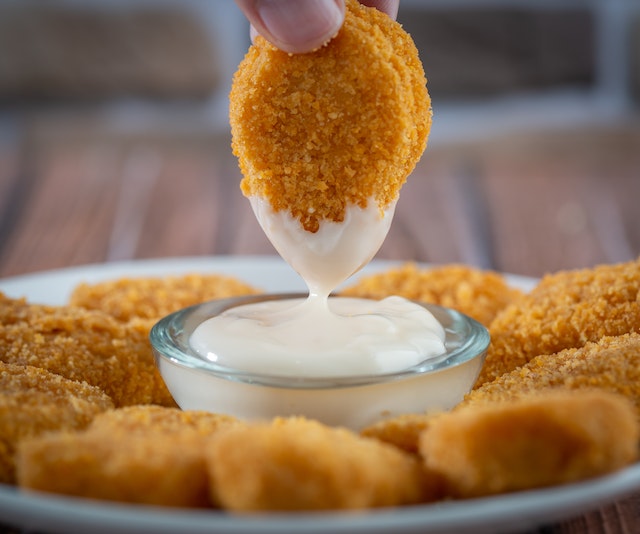
Why are emulsifiers used in processed food? They help different compounds to combine, and they make foods less sticky and easier to eat.
What are emulsifiers? Their basic job is to combine two compounds that wouldn’t normally be able to hold together. An obvious example is oil and water. If you tip olive oil into a glass of water, the olive oil will sit on top of the water with a clear distinction layer between the two. The two compounds will not mix, no matter what you do. If you stir them like crazy and then leave them, they will separate again. This is because water molecules are polar molecules. One side of the molecule has a slight positive charge, and one side has a slight negative charge. This means that water molecules very easily stick to other water molecules. It is also why a lot of materials dissolve in water. If you drop sugar or salt into water, the molecules are attracted to the positive or the negative side of the water molecules and they get broken apart. This doesn’t happen with oil because oil is a nonpolar molecule. That means the sides don’t have a positive or a negative charge and they are not attracted to water. Nonpolar molecules are only attracted to other nonpolar molecules so when you put oil in water, the water molecules stick together and the oil molecules stick together and they are not attracted to each other. This property of not being attracted to water is called hydrophobic.
So, what does an emulsifier do? Emulsifiers have two ends, one of which is attracted to water (hydrophilic) and one of which is not attracted to water (hydrophobic). This means it can act as a joiner between the oil and the water. The hydrophilic side is attracted to the water and the hydrophobic side is attracted to the oil. If you put an emulsifier in food, you can mix compounds that contain water and compounds that contain oil. Salad dressing or mayonnaise are two good examples.
Emulsifiers have been used in food processing for a long time. Mayonnaise was first made in 1756 and it was made using olive oil, vinegar, egg, and seasonings. Oil is hydrophobic and the vinegar is mostly water, so these two ingredients should not mix. However, egg yolk is a natural emulsifier, and it can combine the olive oil and the vinegar, allowing all of the ingredients to mix. There are several other natural emulsifiers that have been used in food preparation for thousands of years. Some examples are egg yolk, milk, honey, and mustard. These emulsifiers are a necessary part of food if we want to mix opposing ingredients and they are not bad for us.
It has been discovered that using emulsifiers can have a huge range of benefits in the processed food industry. Along with all of the other additives that are added to processed food, chemical emulsifiers are also commonly used. They can keep the oil and water spread evenly through a product, giving it a light, tender, and uniform texture. They can prevent ice crystals from forming in ice cream. They can stop chocolate from turning white if it is stored in a warmer place. They can extend the shelf life of foods. They make it easier for foods to be molded and shaped. They make processed bread fluffier and softer. They make it easier for foods to be mass produced at lower prices. Emulsifiers are even used in soft drinks because they have a lot of oil-based flavors and colors that need to mix in with the water in the drink.
However, recent research has shown that consuming too many emulsifiers can be bad for your help. Consuming some emulsifiers can upset the gut microbiome, causing inflation and metabolic syndrome. They can lead to the onset of diabetes and obesity. Some people say that the studies carried out on mice have no bearing on humans, and it may be the case that emulsifiers on their own are not harmful. Perhaps it is simply consuming too much processed food that is causing the gut microbiome upset and all of the other problems. It is probably true that the current obesity epidemic began with the introduction of processed food in the 1970s and has increased in line with the increased consumption. And this is what I learned today.
Photo by Leonardo Luz: https://www.pexels.com/photo/close-up-of-person-dipping-chicken-nugget-in-sauce-14001636/
Sources
https://www.products.pcc.eu/en/blog/emulsifiers-used-in-the-food-industry/
https://foodinsight.org/emulsifiers-in-food/
https://www.webmd.com/diet/what-are-emulsifiers
https://wonderopolis.org/wonder/why-dont-oil-and-water-mix
https://www.healthyfood.com/advice/emulsifiers-friend-or-foe/
https://www.webmd.com/diet/what-are-emulsifiers
